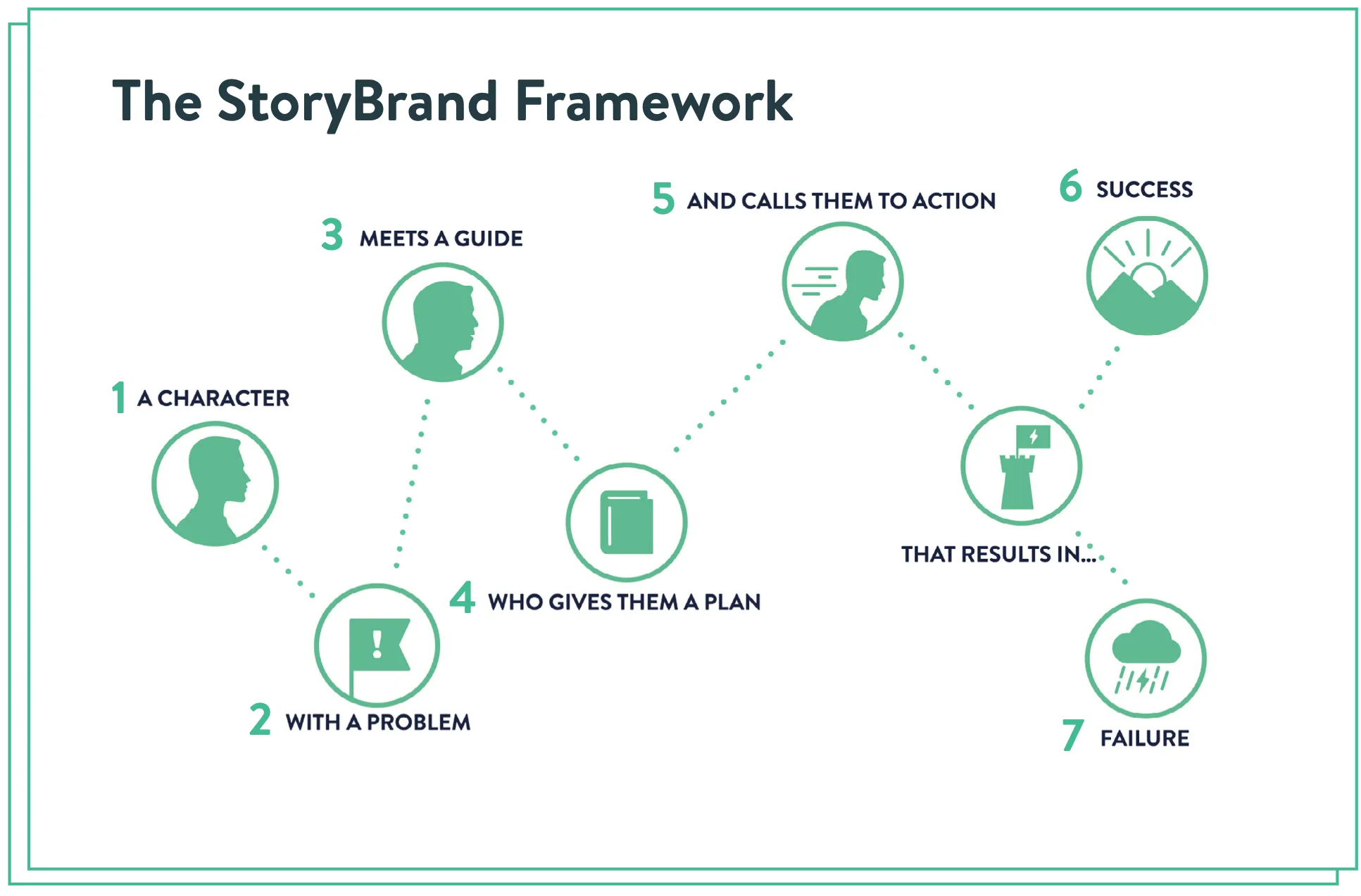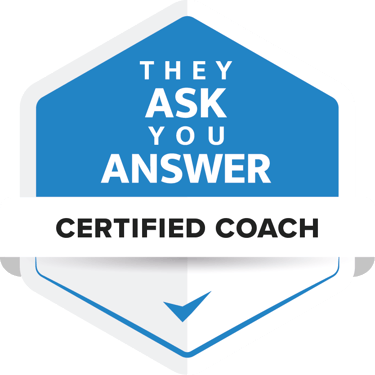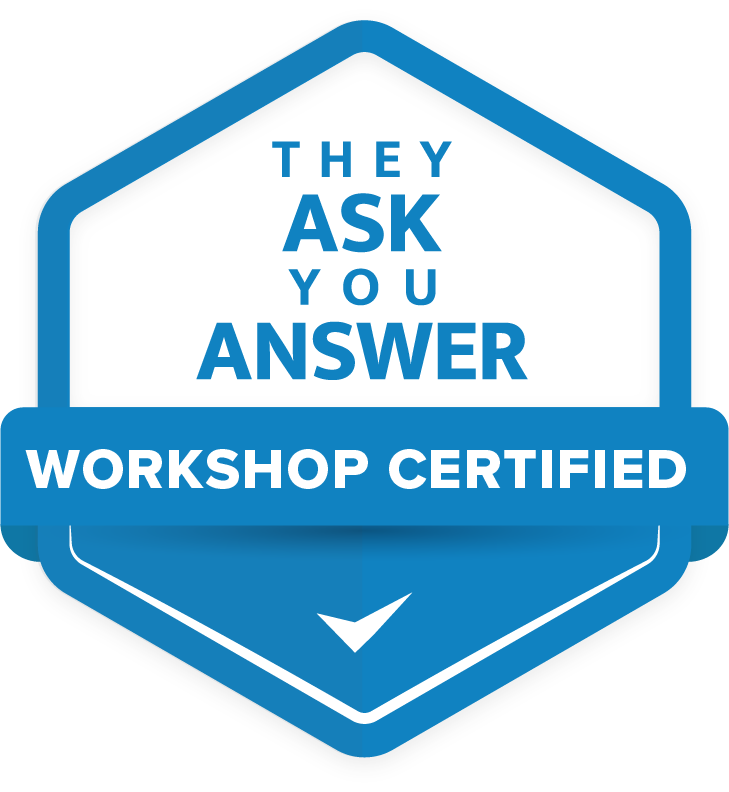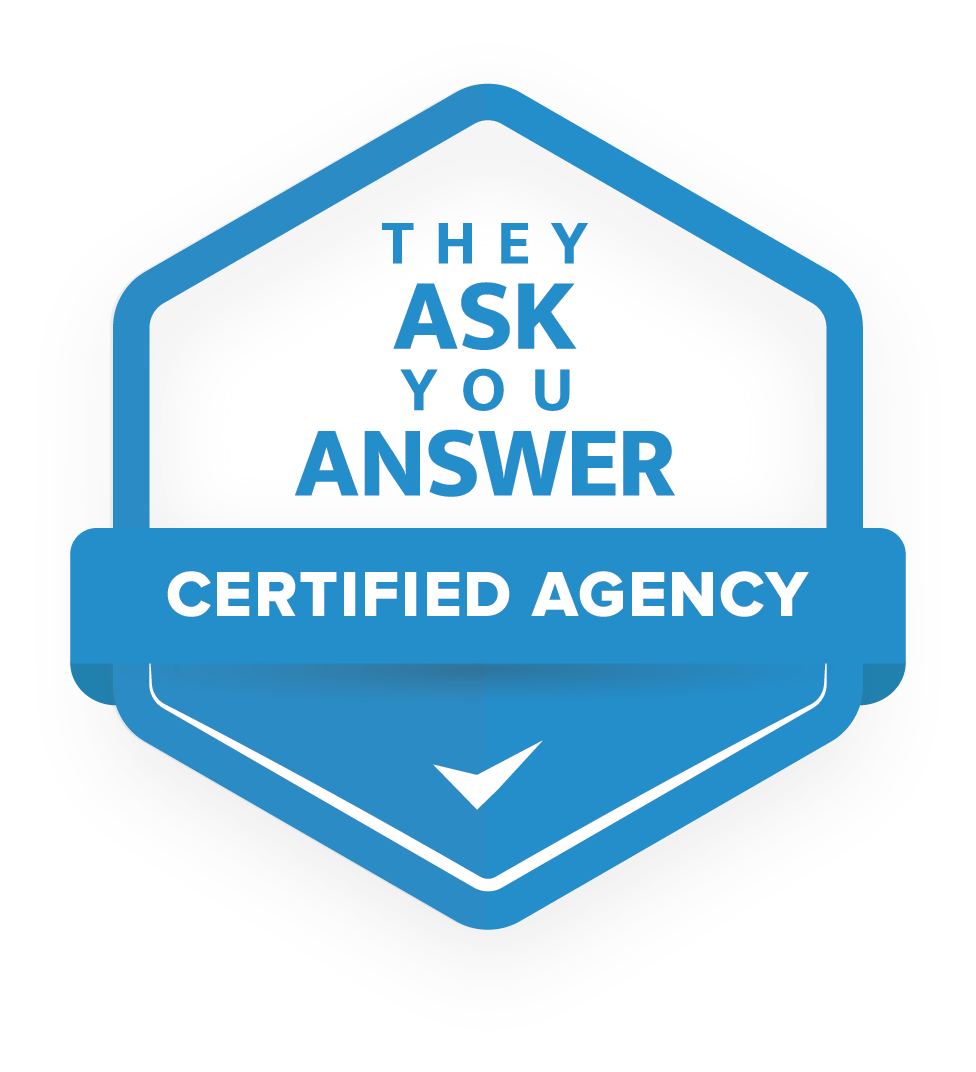The StoryBrand framework: create a brand story that delivers conversion

You have a great product or service, but you find that your message is not getting through to your target audience.
- Your website attracts few visitors
- Your social media posts barely get any engagement
- Your sales calls often come to nothing.
It feels like you are talking to a wall and you wonder in frustration:
Why don't people listen to what I have to say?
Your offer is not the problem, but the way you communicate about it. Most companies make the same mistake: They position themselves as the hero of the story, rather than as the guide who helps the customer solve their problem.
At Buzzlytics, we have helped dozens of companies clarify their brand message over the past few years using the StoryBrand framework. I have seen this approach transform companies from unremarkable players in their market to the go-to experts that customers love to do business with.
In this article, I'll take you through the seven elements of the StoryBrand framework. You'll discover how to create a brand story that resonates with your target audience and drives them to action. After reading this article, you'll understand how to put your customer at the center of your communications, how to position yourself as the trusted guide, and how to formulate a clear message that converts.

This article is a translation/edit of the article Create a Brand Message That Converts With the StoryBrand Framework by Donald Miller, creator of the StoryBrand framework.
Most companies position themselves as the hero of the story, rather than the guide who helps the customer solve their problem.
The 7 components of the StoryBrand framework
1. A main character
Every good story begins with a protagonist who wants something. In movies, screenwriters make it clear at the beginning of the film who the hero is, and within minutes the audience knows what the hero wants. Imagine being 12 minutes into The Bourne Identity and still not knowing exactly what Jason Bourne wants - you would probably walk away.
Most companies are not clear in explaining what they offer. When you describe exactly what your customer (the hero in your story) wants, you invite him into a very specific story. And that's what he's looking for.
You must summarize in just a few words what you offer. If you present multiple solutions to multiple problems, you will be ignored. The human brain is simply not made to process that many storylines.
You have to be known for something, preferably one thing.
Ask yourself: What do my customers want in relation to my brand? Is my brand known for one thing it offers?
You must be known for one thing or you will be ignored.
2. Has a problem
People have a kind of Rolodex in their heads. When they hear about your company, they don't file you alphabetically - they file your company under the problem you solve.
If you have not clearly defined the problem you are solving, they will throw away your business card.
The only reason people call you, go to your website or walk into your store is because they have a problem and they want you to solve that problem. If you clearly state that problem and offer to solve it, they are interested.
Ask yourself: Have you clearly defined what problem your brand solves?
3. And meet a guide
This is a major shift in perspective. Customers are not looking for a hero. They are looking for a guide. Understanding this important principle will change the way you talk about your business.
Potential customers don't need another hero. They need a guide.
The first step is to understand your role in your client's story:
- You are not Luke Skywalker. You are Yoda.
- You are not Frodo. You're Gandalf.
- You are not James Bond. You are Q.
So don't talk to potential customers about what *you* are trying to do. Present your products and services as tools that will help them improve the world, win over their loved one or be successful at what they do. That's the message they respond to.
Ask yourself: Do you position yourself as the guide?
4. Who gives him a plan
Resumen:
- You've identified what your customer wants, inviting them into a story.
- You've identified a problem that makes him feel something, drawing him into the story.
- You have positioned yourself as a guide, giving him hope now that he can solve his problem.
You are now further along than most companies get with their customers, but it is still too early to proceed to the sale.
Your customer then sees a yawning gap between where he is and where he needs to go. Pulling out his wallet is scary. If he spends money, he may lose money. If it doesn't work, he may feel embarrassed.
You can solve this by giving your client a plan. Three or four steps in which you explain how easy it is to work with you.
For example, a financial advisor might say:
"I think you can retire sooner than you thought. I have a very simple process that will help you make that decision.
- We have an informal introduction.
- We assess your goals.
- You get a customized strategy for retiring early. If you want, I can help you implement that strategy for the rest of your life."
You are the guide, so you must give your client a plan so he can be successful in achieving his goals.
Ask yourself: Do you have a simple plan that makes it easy for your customers to do business with you?
5. And calling him to action
Now you can move on to the sale. In doing so, it is good to know that people will not take action unless they are urged to do so.
So, as a guide in your customer's story, you must urge them to buy something from you, and this urging must be very, very clear.
If there is no "Buy Now" button in the top right corner of your website, you are missing out on customers. Don't fill that section of your website with 25 other choices such as About Us, Contact Us and FAQs. Your direct call-to-action (the "Buy Now" button) should be a different color and it should be an obvious button to click.
We have to give our customers something to accept or reject.
Ask yourself: Do you have a clear call-to-action?
As a guide, you must urge your customer to buy from you, and this urging must be very clear.
6. It prevents failure
This is a classic part of storytelling. Heroes are forced into action because something is at stake.
- Katniss volunteers for the Hunger Games to save her sister Prim.
- A retired CIA agent must use all his old connections and skills to rescue his daughter from a kidnapper in Taken.
- Michael is drawn into his father's Mafia world when his father is shot in The Godfather.
None of these characters wanted to get involved in the action of the story. They were forced to avoid a tragic ending (failure).
What that means for your brand is that you need to clearly communicate the negative consequences if customers don't buy your products or services.
Ask yourself: Have you communicated what is at stake for your customers? What are the negative consequences of not doing business with you?
7. And leads to success
You need to show customers how your products can positively affect their lives.
Both your website images and sales copy should help your customers imagine a life in which their problems are solved. Show them what their life can be like without a toothache, with more money in the stock market or with a beautiful garden.
People naturally tend toward happy endings.
If you don't tell people what their lives will be like if they do business with you, they won't do business with you.
Ask yourself: How can you help your client visualize his success after doing business with you?
What does your client's life look like after you help them?
Create a BrandScript
When you have completed each of these 7 steps for your business, you have what we call a BrandScript. Below is an example of a BrandScript for CarMax:
CarMax understands that their customers don't like the experience of shopping at a used car dealership. They know their customers are afraid of negotiating with used car salespeople or making a mis-sale. CarMax makes it extremely easy for their customers to have a great car buying experience by identifying their problem and giving them a plan.
Tell a story that converts
The StoryBrand framework provides a powerful structure for clarifying your brand message and truly reaching your customers. By positioning your customer as the hero of the story and yourself as the trusted guide, you create a narrative that resonates and drives action.
Many companies still struggle with an unclear message, causing potential customers to drop out. They miss the opportunity to truly connect with their target audience and miss out on valuable sales. The StoryBrand framework can change this.
At Buzzlytics, we have already helped many companies transform their communications using this framework. Time and again, we see how this approach leads to more engagement, better conversions and ultimately growth.
Do you also want to harness the power of storytelling for your brand? Then schedule an appointment with one of our consultants today.
Related articles
March 11, 2024
-
Reading time: +/- 4 min
January 7, 2025
-
Reading time: +/- 8 min
October 31, 2024
-
Reading time: +/- 10 min








